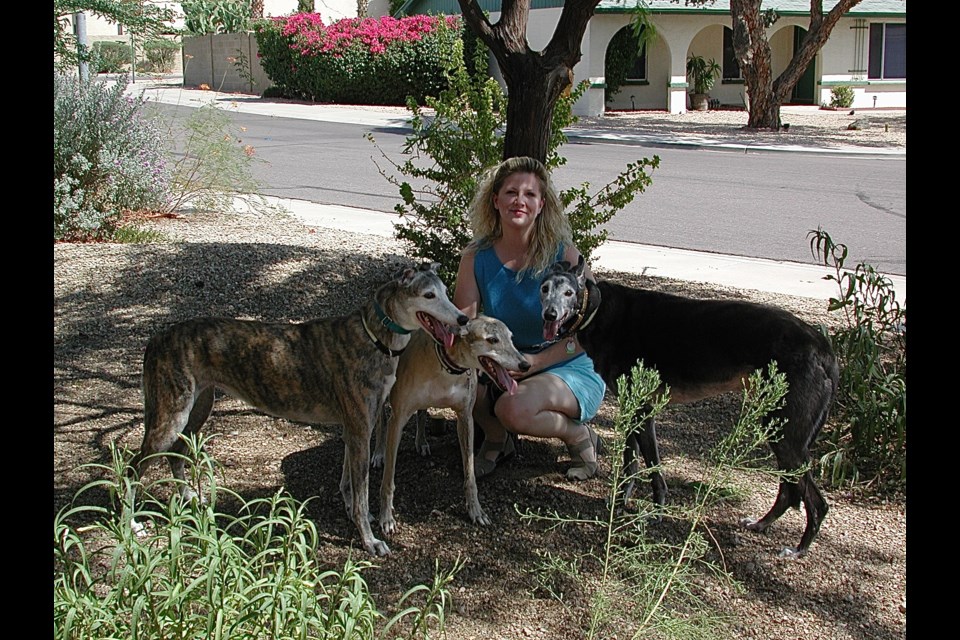How can I get my puppy to “come” when called?
Teaching a puppy to “come” on command is a very difficult but important task. Start early because a puppy that will come when called is safer! In addition, most young puppies do not like to stray too far from their owners. So all it takes is a kneeling owner and a happy “come” command and your puppy may willingly approach (without the need for any food or toy prompt).
Similarly most young puppies will automatically come and follow as you walk away. However, by 3 to 4 months of age, as puppies become a little more independent and exploratory, more appealing rewards may be needed. The two most important rules about teaching your puppy to come to you is to set up the puppy for success (so that you never fail) and that each training session is simple, fun and pleasurable. NEVER CALL YOUR PUPPY TO YOU FOR DISCIPLINE!
Start by backing away from your puppy 1 to 3 feet. Clap your hands, wiggle your fingers in an “come here” fashion, wiggle a food treat or a favored toy (prompt) in front of his nose. Dogs do better with following when there is something moving and attracting his attention. At the same time say the puppy’s name and “come.” Use a happy inviting tone of voice. When your puppy comes to you, praise him lavishly and give the treat. Then repeat. Start by only moving short distances, then gradually have the puppy come further to reach you.
Reinforce this task by calling your puppy over multiple times daily, giving a pet and/or a food treat and sending him on his way, allowing him to go back to whatever he wants to do. Try to avoid only calling your puppy to bring him inside, to put him in his crate, or otherwise end something fun. Be sure to spend time calling your puppy over and then releasing him. This will help the puppy learn that by coming to you, good things happen. Remember it is critical to succeed with every training session. Stay close, make certain that there are no distractions and proceed slowly.
Over time, your puppy should be very slowly taught to come from progressively farther distances and in environments with a greater number of distractions. If there is any chance that the puppy might escape or disobey, have the puppy wear a long remote leash (which can be left dangling as the puppy wanders and investigates). Then if your puppy does not immediately obey the come command, a very gentle tug of the leash can be used to get the puppy’s attention, and a repeated command in an upbeat, happy voice (along with a food or toy prompt) should be able to ensure that the come command is successful and rewarding.
How can I teach my puppy to wait?
Although much the same as stay, this command is important for the puppy that might otherwise bound out the front door, lunge forward to greet people and other dogs, or run across a busy street.
Find a situation where the puppy might try to move ahead, such as at the front door, so that you can begin to teach the wait command. Training sessions should begin when there are minimal distractions outdoors (other dogs, people) that might increase your pup’s motivation to run out the door. Use a leash or leash to ensure control. Begin with a “sit” by the front door. While standing between your dog and the door, and with only a few inches of slack on the leash, give the “wait” command and open the door.
If your puppy remains in place for a few seconds, begin to walk out the door and verbally release him to follow. Then repeat, with longer waits at each training session. If, however, when you open the door or begin to walk out, your puppy tries to run ahead of you, you should gently pull up on the leash, have your puppy sit, give the wait command, and repeat until successful.
Once your puppy will successfully wait for a few seconds and follow you when released out the door, gradually increase the waiting time, and then try with distractions (dogs or people on the front walk). Once fully vaccinated, this training should also be tried as you walk across the street, or before your puppy is allowed to greet new people or dogs he meets.
This is a great foundation for further training with your puppy. He needs to learn to pay attention to you and that you are more relevant than anything else that is going on in the world. This foundational training should be well rehearsed PRIOR to outdoor socialization. Once your puppy is vaccinated and ready for the world, it is like walking into a huge toy store. Everything is exciting and he wants to interact with as much as he can as quickly as he can. Having the foundation of a come command along with a wait command is a great way to set your puppy up for success for future training.
Sam Freeman, CPDT-KSA, is the president and owner of Pet Behavior Solutions and Edu-Care for Dogs, based in Scottsdale. She is the creator of the Core Behavior Assessment, which is the behavior evaluation program used by many animal shelters and animal control agencies in Arizona. Freeman is certified through the Certification Council for Professional Dog Trainers and has completed specialized education and training in psychology, learning theory, ethology, family counseling, behavior modification techniques, aggression, canine and feline behavior issues, and grief counseling. Reach her at 480-200-2011 or visit petbehaviorsolutions.com.



